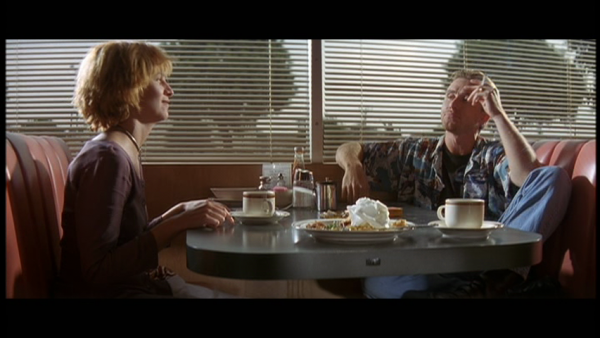Today I want to share a small case study with you, illustrating how word-of-mouth marketing really happens. My goal is to encourage you to connect in meaningful ways with others who resonate with the writing and creative work you are passionate about. Okay, let’s dig in…
OMG! My Book Was Mentioned on a Podcast!
Last week I received an email letting me know that me and my book, Be the Gateway, were mentioned on the #AmWriting podcast.
Eeeeeeeeeeee! (that is what I thought when I found out.) This was me:

The #amwriting podcast is incredible for so many reason:
- Each episode is so wonderful in how helpful it is, tackling big difficult tasks in this super down to earth and friendly way.
- The two hosts are just awesome: KJ Dell’Antonia, who is a columnist and contributing editor for the New York Times’ Well Family, and Jessica Lahey, who writes the Parent-Teacher Conference column for the New York Times’ Well Family and is the author of The Gift of Failure: How the Best Parents Learn to Let Go So Children Can Succeed.
- Their audience are exactly the people who would appreciate the message of Be the Gateway.
So you can see why I was so excited to be mentioned on the podcast.
The Timeline
Okay, let’s break it down step-by-step how this happened. It feels like this is the opening scene:

… because the reality is, word-of-mouth marketing often feels like a movie such as Pulp Fiction:
- You can’t tell which part happened first.
- You can’t tell what action led to which reaction, or which unintended consequence.
- There are so many characters that you don’t realize are interrelated in some ways.
- You realize how easy it is to end up like Vincent Vega in the shower instead of Jules Winnfield taking his wallet back.
Okay, this is what happened, this is what word-of-mouth marketing looks like:
- Kathleen Fordyce signed up to my email newsletter a few years ago. She tells me, “I have been receiving your newsletter for years and always found it helpful.” I point this out because it underscores an action I took, to keep sending out an email every single week, but also an action she took: she did not click the “unsubscribe” button dozens and dozens of times. She could have. She didn’t.
- Kathleen listens to the #amwriting podcast, and heard KJ mention that she is finishing a book, and was considering how to grow her community. Kathleen emailed her recommending my newsletter, since that is a topic I focus on often.
- KJ signed up for my email newsletter! Yay!
- When someone signs up for my newsletter, an email is automatically sent out that asks, “What is your biggest challenge?” I read and respond to every single one of these — it is such a wonderful opportunity for me to learn about and connect with someone who is interested in my newsletter. KJ took the time to respond to this, which I want to call out because she is busy! I mean, all of you are busy. I never take this for granted, the time and energy it takes to reply to that email.
- When I received her response, I noticed her name right away. I became aware of KJ awhile back when I was doing research for a client who is an author writing about education and family. I replied back to her response, told her how much I appreciated her checking out my newsletter, then asked her a question of how I can help her with her immediate challenges in growing her community.
- We had a nice back and forth conversation via email exploring all of this.
- I suppose she heard about my book via one of the email newsletters I sent, and she bought it and read it.
- Then on May 5th she mentioned me twice on the podcast, and she mentioned that she liked Be the Gateway.
- Kathleen emailed me to let me know, and then we had a nice email exchange back and forth. And more importantly, I now follow her on Instagram, where she shared one of my new favorite quotes:
“You can do it!” -Coffee. - I emailed KJ to thank her and tell her I appreciated the mention on her podcast. I also asked if I can interview her for research I am doing for my next book.
When I consider these steps, they at once seem very simple and very complex. Simple because the main driver here was empathy, focus, and simple communication. It was Kathleen and KJ and me just trying to help each other and connect in a meaningful way. This is not unlike how word-of-mouth marketing would have happened in the 1920s, the 1950s, or the 1980s.
It feels complex because it isn’t a simple system that has a clear pre-planned result.
What You Can Learn From This
I think there is a lot that one can learn from this:
- The long-game works. Just showing up, posting a blog and newsletter each week. Responding to emails. Asking questions. Connecting one by one with wonderful people.
During that time, the years that Kathleen received my newsletter, there were so many moments of writing them on weeks where I felt too busy to find the time for it. Or where clicking “send” on the newsletter gave me sweaty palms because I didn’t know if the post would resonate or fall flat.
- Mentioning your work, works. When Be the Gateway came out, I told everyone I know. That wasn’t always easy, because no one wants to feel that they are being self-promotional, and they certainly don’t want to feel they are spamming people. But without me doing that, KJ never would have known about it.
- Direct outreach works. It is just amazing that Kathleen reached out to KJ, that Kathleen reached out to me, and that KJ replied to my emails. If you feel like you don’t know anyone who would resonate with your creative work, or who is a like-mind, try reaching out. Does it feel risky? Yep. Is it risky? Nope.
- You have to keep engaging. As all of this was happening in the past week, I was thinking: “How can I thank them?” “What can I learn from this and share with others?” “How can they fit into research I’m doing for my book?”
It’s scary to keep engaging sometimes because you don’t want to risk rejection. Even before I wrote this post, I emailed KJ and Kathleen asking permission to do so. Between the time I sent the note and the time they replied, I was nervous. What if they feel they did me a favor, and now I’m asking something ELSE of them, messing up any goodwill that we had. Luckily, they felt sent lovely responses, and were totally into the idea.
Too often, we think that the sale of a book happens in one step. That you do something on social media and it leads directly to the sale of your book. I have heard versions of this a thousand times from an author or someone marketing their creative work, “I checked my Facebook ads, and they didn’t convert to a book sale. What a waste.”
But real sales happen with a weird process of consideration, abandonment, re-consideration, working across networks, little reminders, and finally, a sale. When I buy a book, it is often after I have heard about it a few times. After I checked it on Amazon three times on three different days. After I put it in my shopping cart, then got distracted, only returning to it fifteen days later.
All of this was underscored in an email conversation I had with Kathleen this week:
“In the past, I honestly might not have sent KJ that initial email. Two years ago, I attended the ASJA (American Society of Journalists and Authors) conference in NYC. I was blown away by how friendly, forthcoming and honest the writers there were – both in their presentations, panels and how willing they were to answer any questions or to simply share their experiences.”
“I realized two things: I missed the camaraderie and connection with people who are passionate about writing. And I noticed that the same people who were on one panel would be sitting next to me in the next talk, taking notes furiously. I realized even though their careers were way ahead of mine, they still were trying to learn, had questions or were trying to branch out their careers to try something new.”
“Fast forward: now I connect regularly (just by email or sometimes phone and Skype) with other writers. I seek that connection and make an effort – even if just a small one – to include that as part of my life and work.”
“I was in a mastermind for a while and do think people underestimate the power of collaboration. Not necessarily working together, but having people you can turn to – to bounce ideas off of, get feedback and to simply share the process with.”
“There are several writers that have welcomed me into their tribe and been so generous with their time and insight, I look at this as paying it forward. Because I simply want to live in a world where this sort of helpful supportive network exist, even among strangers.”
Thank you to Kathleen and KJ for their incredible generosity. Please consider checking out their work:
KJ: website, podcast, Instagram, Twitter
Kathleen: website, Facebook, Instagram.
Oh! And check out Jessica Lahey who runs the #amwriting podcast with KJ, she is the author of The Gift of Failure: website, Twitter, Instagram
Thanks!
-Dan
